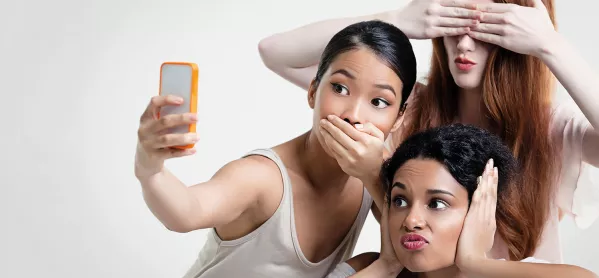Children sharing naughty images is nothing new. When I was in Year 7, I remember a boy in my school running around the playground brandishing page three of The Sun like a trophy. But times have changed.
Five years ago, when I was working at another school, I confiscated the phone of a Year 7 boy. The screensaver was an image of a naked woman in a dog collar fellating a man, who was grabbing her hair - and she looked in pain.
When I called home to speak to the boy’s parents, his mum calmly explained that the boy’s big brother had put the image on his phone - she’d seen it - and what was the problem?
The problem - personal politics aside - was that this image was totally inappropriate for an 11-year-old to see, let alone access on a regular basis. Bombarded with such images, many children are maturing into beliefs where this is not fantasy: it is expected.
Research commissioned by the NSPCC last year revealed that 53 per cent of boys and 39 per cent of girls who have viewed porn see it as a realistic depiction of sex.
There is not much that schools can do about the prevalence of online pornography or the ease with which it can be accessed by their students. Children are inquisitive and some know just about as much about how to get around school filters and firewalls as hackers do.
Inappropriate images
But I don’t want these images in my school and I doubt I am alone. I am worried that the children accessing them are getting younger and especially concerned these images are normalising exploitative and abusive relationships.
Speaking to many heads and child protection leads, one of the biggest problems they have to deal with is now children requesting other children to recreate these images. Harassment and bullying of - particularly, but not exclusively - girls to take naked pictures or be videoed performing sexual acts to share with others.
A couple of assemblies a year and a poster in the tutor base is not enough. There has to be a continual dialogue: one involving families.
It has to start at a young age in primary schools. It has to be without the typical blushing English reserve and be discussed with children in a no-nonsense way. It has to be led from the top and someone on SLT and it has to be responsible.
It’s not about making pornography bad - that hasn’t done the drugs debate much good, after all - but it does have to be about developing a shared understanding of what is OK at what age and making it clear that having pornography in a school is never OK.
Keziah Featherstone is a co-founder and national leader for #WomenEd and a member of the Headteachers’ Roundtable.
Want to keep up with the latest education news and opinion? Follow Tes on Twitter and Instagram, and like Tes on Facebook.

